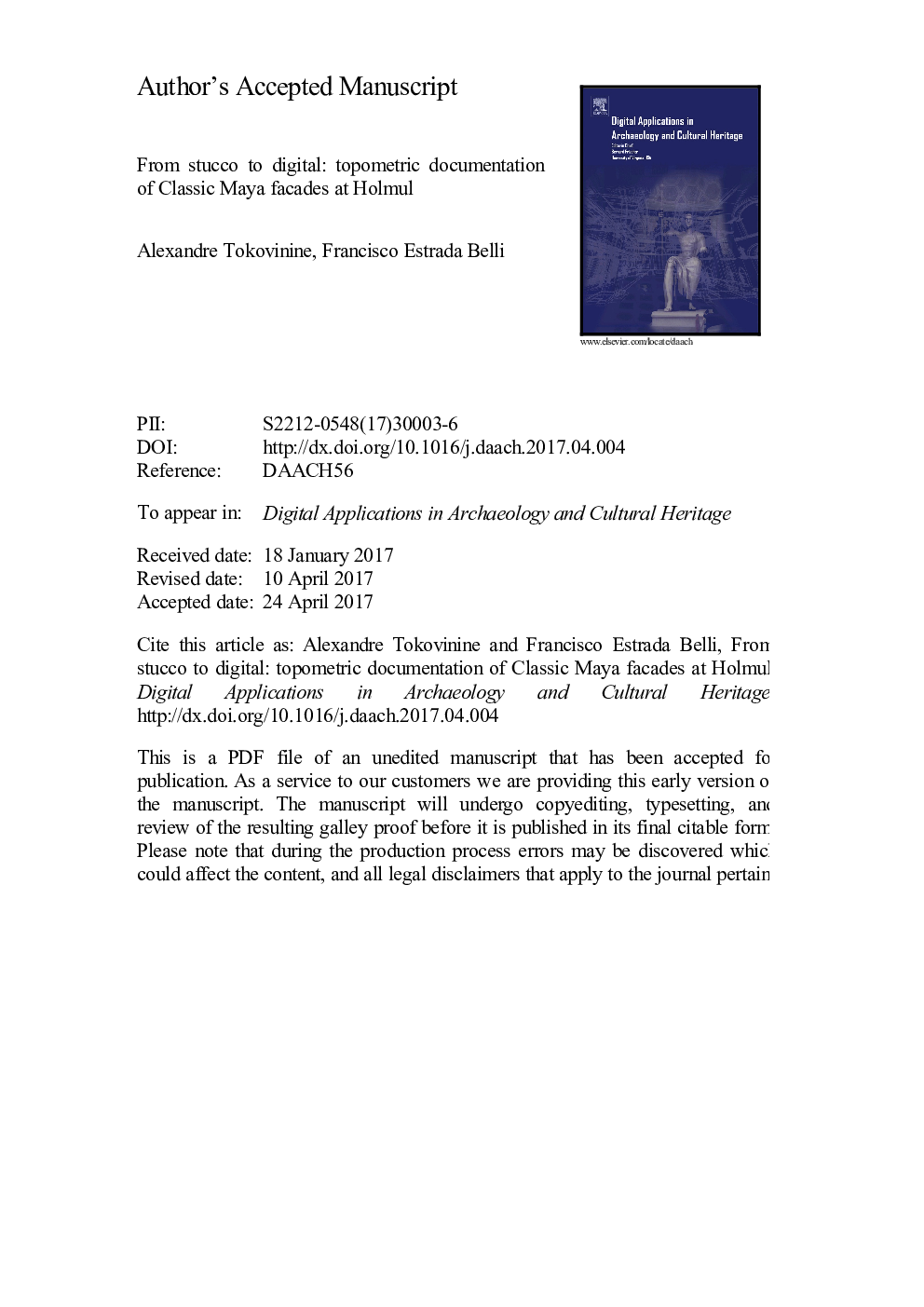| Article ID | Journal | Published Year | Pages | File Type |
|---|---|---|---|---|
| 4761563 | Digital Applications in Archaeology and Cultural Heritage | 2017 | 37 Pages |
Abstract
This article addresses the use of a structured light 3d scanner to document ancient Maya architecture. A rationale for the project is outlined along with some practicalities of operating the equipment in remote locations and archaeological tunnels. The two case studies describe the documentation of painted stucco friezes at the archaeological site of Holmul, Guatemala, by the Corpus of Maya Hieroglyphic Inscriptions of the Peabody Museum of Archaeology and Ethnology, Harvard University. Holmul buildings boast some of the most elaborate and well-preserved stucco sculptures in the Maya world. The paper concludes with highlighting the current challenges in creating and using high-resolution 3d replicas for research and conservation purposes.
Related Topics
Physical Sciences and Engineering
Computer Science
Computer Graphics and Computer-Aided Design
Authors
Alexandre Tokovinine, Francisco Estrada Belli,
